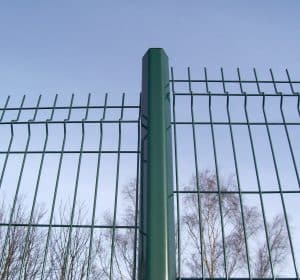DHF guide to gate safety for manufacturers, installers and owner
27th December 2014

In the introduction, the DHF guide to gate safety explains the background and how powered and automated gates are considered to be ‘machinery’ within the scope of the European Machinery Directive 2006/42/EC and the UK’s corresponding Supply of Machinery (Safety) Regulations 2008. The gate safety guide also highlights the importance of risk assessment and identifies the most important powered sliding gate standards. However, the current standards do not cover adequately all risks, such as entrapment, so the DHF guidance makes recommendations that go beyond the requirements in the standards.
In most cases, it will be the gate installer that is legally responsible for CE marking a gate to indicate its compliance with all of the Essential Health and Safety Requirements of the Machinery Directive. Consequently, it is also the installer’s responsibility to ensure that all of the necessary documentation – including the Technical File and Declaration of Conformity – is in place and that the relevant tests have been completed and documented satisfactorily.
While the Machinery Directive applies to new installations, it should be noted that existing gates must also be safe, even if they were manufactured and installed prior to the new Machinery Directive coming into force on 29 December 2009. For example, the Health & Safety at Work Act 1974, the Workplace (Health, Safety & Welfare) Regulations 1992 and the Provision & Use of Work Equipment Regulations 1998 (PUWER 98) apply to the provision and use of gates in workplaces. The DHF guide to gate safety provides advice on servicing, maintenance and repair of existing gates, and recommends what action should be taken in the event of a gate being found to be dangerous.
For new powered and automated gates there is clearly a benefit in having one company undertake the design, manufacture and installation, as this simplifies the processes involved in CE marking the gates and ensuring that they are, in fact, safe. Procter Sliding Gates offers a comprehensive gate service covering site survey, risk assessment, design, manufacture, installation and maintenance. The company’s state-of-the-art Pro-Glide range of sliding gates enables customers to choose standard or customised gates, all utilising the same basic technical specification and robust, low-maintenance operating mechanisms.
For more information about Pro-Glide sliding gates or to request a copy of the DHF Guide to Gate Safety Legislation and Standards, telephone us, email [email protected].
